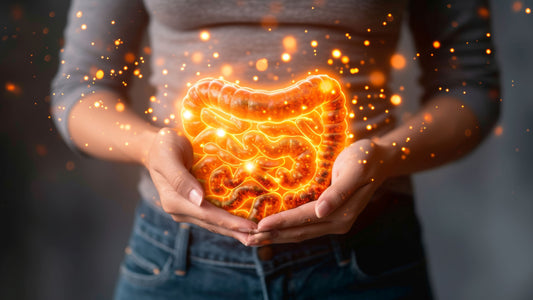You know that turbulent seesaw of emotions that can make you feel like you are completely out of control and losing your mind? You can thank fluctuating estrogen levels and hormonal changes for that.
Many women end up taking thyroid medications when experiencing changes, to stabilize symptoms of thyroid problems such as hair loss, weight fluctuation, fatigue, and mood swings. But medication is not the ultimate solution.
I am fully aware that these hormonal imbalances are affecting your life…and driving you crazy! It’s vital you know about the two very important hormones – cortisol and insulin – that can dramatically affect your efforts to balance out all the other hormones. If these two culprits get out of whack, they can cause a cascade of other hormonal symptoms throughout the endocrine system. And, oh, they can make you feel fat and witchy, too.
Conquering cortisol
Today we are going to learn more about the leading problem child, cortisol. From my 25-plus years focused on women’s health and hormone management, I can tell you that while sexual and thyroid hormones are obviously important, cortisol is a big contributor to most of the misery I see in the thousands of women who I saw as patients and many more who participate in my women’s online health programs.
In order to fully address other hormonal imbalances, you first need to get a grasp of how cortisol works. Much like maintaining the structure of a house, you wouldn’t spend a lot of time and energy painting the walls first if all the wood underneath was riddled with termites. Sure, your newly painted walls might look OK, but you haven’t solved the underlying, foundational problem…which is certain to rear its ugly head at some point. It’s the same with your hormones.
You need to balance your major hormones first, in order to address any underlying hormonal imbalances.
Symptoms of underlying hormonal imbalances include:
- Weight gain (and challenges with losing the extra pounds)
- Hot flashes
- Mood swings, depression and anxiety
- Brain fog and memory issues
- Fatigue
- Low sex drive
- Vaginal dryness and other symptoms such as pain and incontinence
- Relationship disconnect
- And so much more....
What is cortisol?
Cortisol is secreted by our adrenal glands (which is why people refer to long-term, chronic stress as adrenal burnout). A certain amount of cortisol is healthy for us – it has anti-inflammatory properties and is actually required for our bodies to function optimally.
Cortisol is our stress hormone, and we’re not just talking mental stress.
Examples of stressors include:
- The physical stresses put on your body when you eat a traditionally carb-heavy Western diet, which also is acid-heavy.
- The stress you might put on your body if you don’t deal with any food sensitivities you may have, such as gluten intolerance.
- Strains that cause gut permeability (“leaky gut”) issues.
- Nutrient deficiencies.
- Lack of sleep or not sleeping well.
- Environmental toxins.
- Relationship tensions (e.g., many women come into my programs in the midst of caregiving for a loved one and talk about both the beautiful and the stressful responsibilities involved).
All of these stresses get our cortisol pumping, often at unhealthy levels.
In the case of a short-term stressor (let’s say you are fired or are rear-ended while in your car), cortisol heightens mental focus, provides a jolt of energy, and refocuses the body’s energy resources on addressing the issue. In a “fight-or-flight” situation, cortisol would shut down your libido and reproductive hormones, increase blood flow to your arms and legs, provide a surge of energy, and sharpen your focus.
Everyday short-term stressors are usually more related to things such as relationships, overly demanding schedules, jobs and the like. Too many of us suffer from ongoing stresses like these, as well as from other chronic physical and environmental stresses (poor diets, nutrient deficiencies, toxins, etc.). As a result, our bodies are constantly preparing for an emergency that never comes, which will have a serious impact on our health over time.
What happens when our other important hormones are impacted by cortisol?
-
Adrenal Insufficiency: Initially, the body begins to metabolize proteins from the muscles, which causes fatigue, weakness and muscle pain. This also causes many women to start having cravings and to experience unhealthy weight gain around the middle.
-
Adrenal insufficiency – the Second Phase: We see worsening menopause symptoms because the adrenals are now impacting the balance of other minor hormones (such as estrogen, progesterone and pregnenolone) in favor of creating more cortisol. We may see thyroid hormone fluctuations – in particular, a slowing of thyroid hormone production.
We also may see gut permeability issues, sleep issues, moodiness and isolating behaviors, hair loss, inflammation (a lot of joint pain), decreased immunity, and a lack of libido (coupled with sexual dysfunction). Yuck to all that. In addition, we’ll likely experience blood sugar issues, since our bodies are keeping themselves in this state of preparation for a nonexistent, yet ever-threatening emergency.
- Adrenal hypofunction: Over time, the adrenals will no longer pump out the needed level of cortisol. Why? Because our brain has decided to shut down cortisol production altogether, to protect itself from these high cortisol outputs. Through this feedback system, the adrenals decrease cortisol output as a defensive measure. Gradually, our bodies will then become quite acidic and suffer from increased inflammation, which further compromises our immune system. We can gauge this by measuring the levels of secretory immunoglobulin A (sIgA), an antibody, in our saliva or blood.

The estrogen roller coaster
Other hormones, including estrogen, can be negatively affected by cortisol. As our adrenals start hitting phase two of fatigue, they’ll attempt to somehow produce more cortisol, primarily by stealing from other hormones. The “progesterone steal,” for example, happens when the adrenals steal from the reserve of progesterone, impacting the progesterone-to-estrogen ratio in the body (and becoming something known as estrogen dominance). Estrogen dominance can result in bloating, weight gain, skin problems and other hormonal imbalances, as well as issues with our lady parts, libido and relationships.
How to tame the cortisol beast
Maintaining control over your cortisol levels will support your body by regulating your other hormones in a healthier fashion. There a few ways you can “tame the cortisol beast”:
Embrace an alkaline diet.
Research has shown that eating an acid-heavy diet (one made up of carbs, sugars and processed foods) elevates cortisol. There is a strong connection between dietary acid load and the conditions of bone health, obesity, cardiovascular disease, and overall well-being.
Eating and living alkaline is the solution. (Note that when cortisol is up, our urine pH is low and more acidic, proving that measuring urine pH can tell us much more than how what you are eating is affecting you). Eating and living alkaline not only helps restore cortisol to healthy levels, but also helps reset our daily circadian rhythm, boosts mood, decreases joint pain, promotes better sleeping habits, and helps lose the pounds. An alkaline diet has also been shown to help reduce bone loss, improve muscle mass, and do so much more.
The good news is an alkaline diet is relatively easy to adhere to! In general, vegetables are the most-alkaline foods, due to their mineral content. On the other hand, processed foods, meat, poultry, dairy and most vices (alcohol, sugar and caffeine) are acidic – sorry! I recommend trying to follow an 80/20 rule, with a diet that is 80% alkaline and 20% healthy, clean (i.e., organic!) protein and healthy fats.
Eat/drink natural adrenal adaptogens.
Support your adrenal health with my favorite adrenal adaptogen: maca! Research has shown that maca has adaptogenic properties, which means it can help nourish and balance your adrenals and hormones and also help your body deal with chronic stressors.
Quality maca can also help address menopausal symptoms – many of my clients use it as a natural alternative to estrogen hormone replacement therapy! (Learn more here about the best maca for your health.)
Pursue a healthy lifestyle.
Improving your stress management, reducing toxins in your environment, getting better sleep, maintaining healthy bowel movements, making your gut healthy (by removing food sensitivities) and many other measures will help move your body into a state of being more net alkaline, versus more net acidic.
Test, don’t guess!
Participants in my programs are always shocked to see how even everyday, mundane things can impede their body’s ability to stay alkaline, even if they are eating a strict alkaline diet! “Test, don’t guess” – that’s my motto. You will quickly learn the “triggers” that can bounce your body out of an alkaline state. Once you know what your triggers are, it is much easier to address them.
I believe in “what gets measured, gets managed.” Women in my programs always track their progress – many even test their urine each day, for optimal monitoring. Did you say urine strips? Yes, they use urine test strips, an inexpensive and quick way to test for alkalinity!
And finally, increase the oxytocin in your life!
So, are you living an alkaline lifestyle or an acidic one? Are you ready to make a change?
Embracing an alkaline diet doesn’t have to be hard or boring. If you’re looking for a delicious Keto-Green-approved recipe to brighten up your morning, try my Coconut Almond Pancakes. They are equal parts tasty and nutritious!

Coconut Almond Pancakes
Ingredients
- 1 cup almond flour
- 1/4 cup unsweetened coconut flakes
- 1/2 teaspoon aluminum-free baking powder
- Pinch sea salt
- 1/2 cup unsweetened almond milk
- 1/2 teaspoon pure vanilla extract
- 3 large organic cage-free eggs, beaten
- 1 tablespoon organic ghee
- 2–3 tablespoons almond butter
- 1–2 cups fresh berries, your choice
- 2 teaspoons maple syrup (optional)
- 2 tablespoons organic whipped cream (optional)
Directions
- Combine the almond flour, coconut, baking powder, and salt in a large bowl.
- Combine the almond milk, vanilla, and eggs in a separate bowl.
- Make a well in the dry ingredients and pour in the egg mixture, mixing well.
- Heat a pan over medium heat, add the ghee, and swirl to coat the pan. Ladle a few spoonfuls of pancake batter into the pan and cook for 3 to 5 minutes. Flip and cook for another 2 to 4 minutes, until golden.
- Heat the almond butter until warm and drizzle a spoonful over each stack of pancakes. Garnish with berries and serve.
MAKES 2 SERVINGS
P.S. My Keto-Alkaline Protein Shake powder is a great way to help harmonize your hormones....
As well as fight brain fog and other cognitive issues. My Keto-Alkaline Protein Shake is a perfect way to incorporate more protein into your diet!



